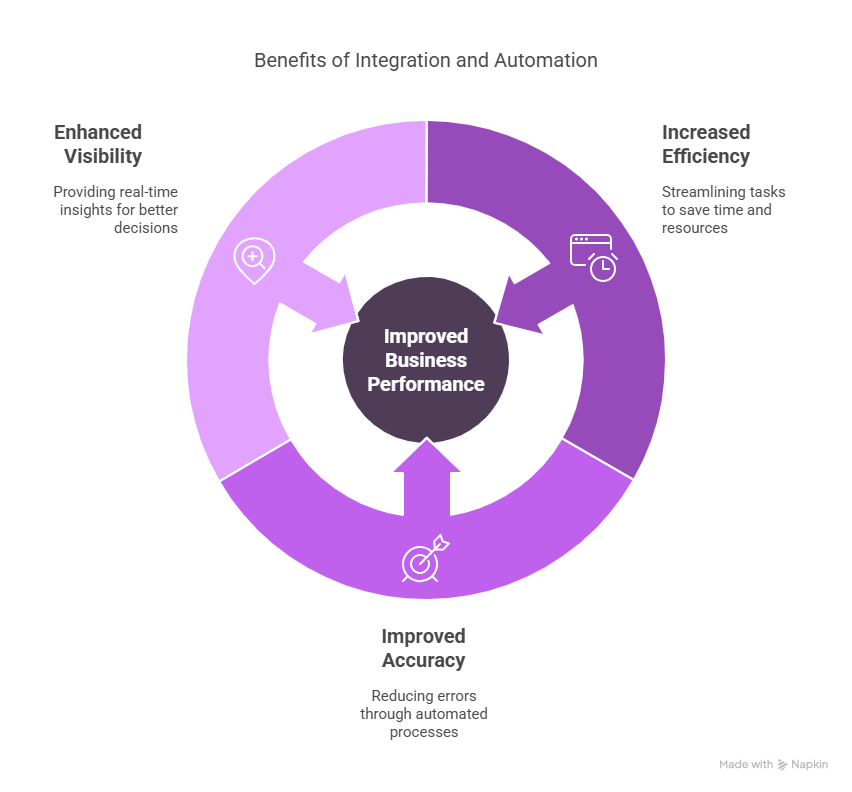The Power of Integration: How Tech Stack Optimization Boosts Business Performance
In the bustling heart of Silicon Valley, nestled between the cutting-edge tech startups and ancient redwoods, there once stood a modest digital marketing firm called Vista Visionary Ventures. Despite their creativity and innovative approaches, their performance was underwhelming. The turning point came when their leader, Emily Dawson, decided to overhaul their entire tech stack after attending a tech conference. Inspired by stories of digital transformation, Emily envisioned a synchronized, efficient and powerful tech ecosystem that could take their operations to new heights. Little did she know, this vision would soon catalyze a profound transformation not only in her company's operations but also in their market results.
The Imperative for Tech Stack Optimization
In today’s hyper-competitive business landscape, technology is not just an enabler but a critical driver of business performance. The term ‘tech stack’ refers to the combination of technologies a company uses to build and run its applications and projects. This stack can include everything from project management software and customer relationship management (CRM) systems to data analytics tools and enterprise resource planning (ERP) systems. However, having a stack of high-tech tools isn't enough; it's the integration and optimization of these tools that unleash the full potential of technology investments.
Improved Efficiency through Integration
Integration of various software systems can dramatically boost efficiency within an organization. By allowing disparate systems to communicate seamlessly, data flows freely across departments. This eliminates the tedious need for manual data entry and reduces the risk of errors. For Vista Visionary Ventures, integrating their CRM with their email marketing system and analytics tools meant that customer data was automatically updated across all platforms. Marketing campaigns became more data-driven and personalized, leading to higher engagement rates.
Enhanced Decision Making with Unified Data
Data is often described as the lifeblood of modern enterprise, but its real value is unlocked only when it can be effectively collected, analyzed, and acted upon. Integrated tech stacks provide a consolidated view of data across the business. This holistic view enables leaders to make more informed decisions. For instance, by analyzing integrated data from sales, customer service, and marketing, Vista was able to identify cross-selling opportunities and areas where customer service could be streamlined.
Cost Reduction through Streamlined Operations
Another significant benefit of tech stack optimization is cost efficiency. By using integrated systems, businesses can avoid the overhead associated with maintaining multiple standalone systems. This might include reduced need for IT support, lower training costs, and fewer licensing fees. Additionally, with enhanced automation and efficiency, companies like Emily’s can operate more leanly, reallocating resources to growth-oriented activities instead of redundant processes.
Scalability and Flexibility
An optimized tech stack not only supports current operations but also provides the flexibility and scalability needed to accommodate growth. As businesses expand, their technology needs evolve. A well-integrated tech stack can scale up (or down) to meet these changing demands without disrupting existing operations. This was evident when Vista expanded its service offerings; their integrated systems could quickly adapt to new business models and customer segments without a hitch.
Case Studies and Real-World Outcomes
Companies across various industries have witnessed transformative results by optimizing their tech stacks. For example, a global retail chain integrated their e-commerce platform with their inventory management and customer service systems, resulting in a 30% increase in fulfillment efficiency and markedly improved customer satisfaction scores. In another instance, a fintech startup leveraged cloud-based solutions to integrate their operations globally, allowing them to launch products simultaneously in multiple markets with great consistency and compliance.
Best Practices for Tech Stack Optimization
While the advantages are clear, optimizing a tech stack is no small feat. It requires strategic planning and careful execution. Here are some best practices:
- Evaluate and Audit Existing Tools: Begin by assessing the current tools and systems in use. Identify redundancies, pinpoint integration gaps, and highlight the essential functionalities required for business operations.
- Define Business Objectives: Align tech stack decisions with larger business goals. Whether it's improving customer experience, increasing operational efficiency, or enhancing data security, clear objectives can guide technology choices.
- Choose Integration-Friendly Tools: Opt for solutions that offer integration capabilities, such as APIs and built-in connectors. This can significantly ease the process of building a cohesive technology ecosystem.
- Invest in Training: Ensure that your team is well-equipped to use the new systems. Adequate training is crucial for achieving the desired performance gains from new technology investments.
- Monitor and Optimize: Tech stack optimization is an ongoing process. Regularly review the performance of your tech stack and make adjustments as necessary.

Conclusion: A Pathway to Enhanced Business Performance
Just like Emily Dawson at Vista Visionary Ventures, business leaders around the world are recognizing the power of a well-integrated and optimized tech stack. By fostering a technology environment that promotes seamless integration and operational efficiency, businesses are not only enhancing their current performance but are also setting the stage for future growth and innovation. In the digital age, optimizing your tech stack is no longer just a recommendation—it’s a necessity for thriving in the competitive business landscape.
Whether your business is large or small, the time to start thinking about your tech stack is now. The right technology, strategically integrated, can transform challenges into opportunities, turning ordinary businesses into industry leaders. Emily’s story is a testament to that, and it can be yours too.